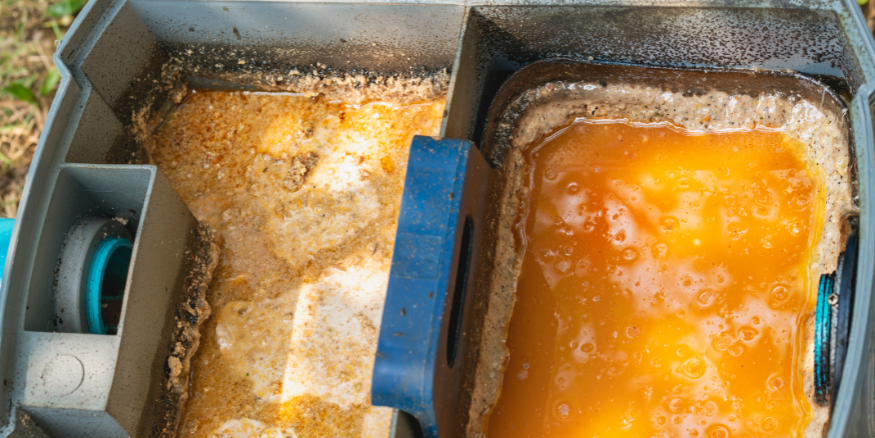Every year, the UK’s sewage system receives close to 500,000 tons of grease and fat. While fats and oils harm waste water treatment equipment, causing millions of dollars in annual repairs for municipalities, grease adheres to pipe walls and can eventually result in blockages. Fats, oils, and grease (FOG) can severely harm the ecosystem if they are permitted to enter a natural water channel.
For these reasons, laws requiring proper FOG control from food service providers are being strictly enforced. If FOG trash isn’t managed properly, polluters risk severe penalties or perhaps closure. FOG from wastewater is another major issue in commercial kitchens, as it clogs internal pipes and may need costly repairs or equipment downtime. Grease traps operate on the premise that grease won’t mix with water because animal fats and vegetable oils are 10 to 15 percent less dense than water. Oils and fats float on top of water as a result. The flow rate is sufficiently decreased when wastewater enters a grease trap so that the wastewater has time to cool and split into three layers. Inside the interceptor, the grease rises to the top and is caught by a series of baffles.
To learn more about grease traps and how they work, you can visit tegematerials’s page. The page explains that grease traps are important for managing fats, oils, and grease (FOG) in wastewater from commercial kitchens, as FOG can cause blockages in pipes and damage to wastewater treatment equipment. Grease traps work by intercepting FOG and allowing clear water to escape, and they come in three main types: passive hydromechanical (manual), automatic, and gravity. The page also provides information on how often grease traps need to be cleaned and pumped out, and how adding biological grease treatment fluid can help break down FOG and improve trap performance.
Best Practices for Grease Trap
Property and facilities managers need to stay mindful of the potential build-up of grease in their trap systems, particularly in the primary interior pipes that connect the kitchen sink to the grease trap. To prevent this, it’s essential to have these pipes hydro jetted at least once a year. It’s advisable to review your city’s guidelines to know how often they recommend obtaining services.
To ensure that the disposal and recycling of grease collected from your business is managed responsibly, you should keep logs of this activity and maintain receipts for all related services. Additionally, you can install Enzyme Drip Systems to aid in breaking down the grease before it enters the city sewer systems.
While we rely on contracted services for larger commercial grease extraction, drip systems, and pumping services, we have ample knowledge about these processes and can assist you with troubleshooting, preventative measures, advice, and maintenance tailored to your needs.
Conclusion
Maintaining a clean and functional grease trap system is crucial for any business that handles food. By following the recommended guidelines, such as hydro jetting the primary interior pipes annually, servicing and emptying the grease trap every few months, and responsibly disposing of collected grease, you can prevent costly and unsanitary grease clogs. Additionally, investing in Enzyme Drip Systems and seeking professional assistance for preventative measures, maintenance, and troubleshooting can further improve the health of your drain lines and overall waste-water system.
